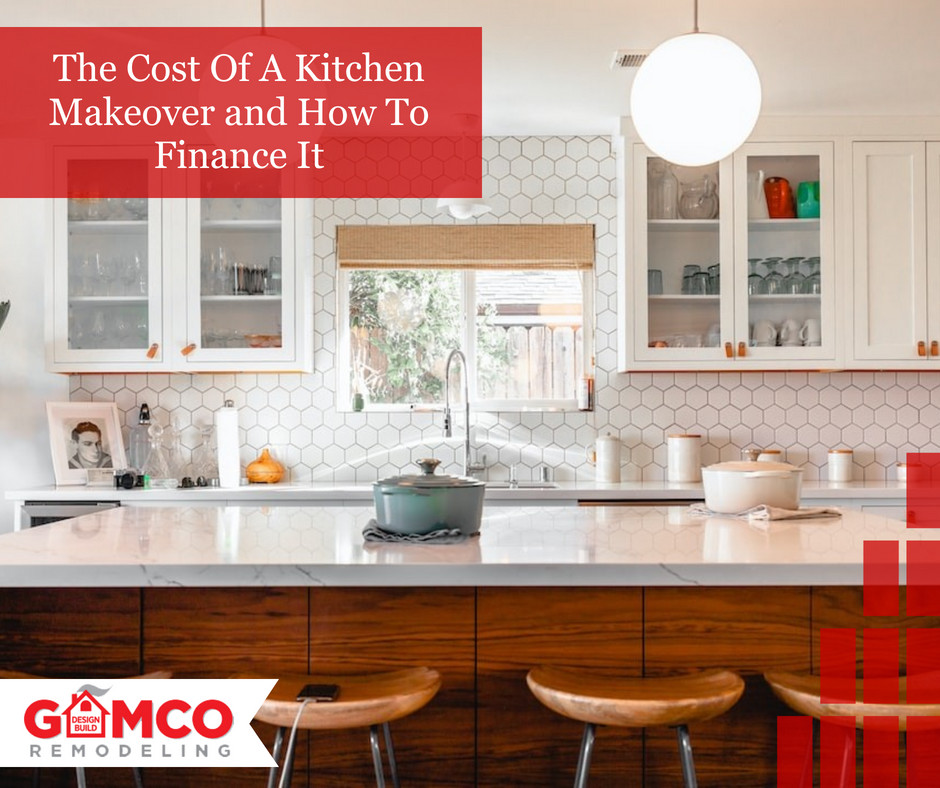
A kitchen makeover is a transformative process that can breathe new life into one of the most essential spaces in a home. From updating appliances and countertops to refacing cabinets and adding fresh coats of paint, a well-executed kitchen makeover can significantly enhance the functionality and aesthetics of the heart of your home. However, with the excitement of the prospect comes the inevitable consideration of cost. Understanding the expenses involved and exploring various financing options can help you plan and execute your dream kitchen makeover without breaking the bank.
Assessing the Cost of a Kitchen Makeover
Before diving into the details, it’s crucial to assess the cost of your kitchen makeover. Begin by identifying the essential upgrades and changes you wish to make. Determine your budget, and allocate funds for materials, labor, and any additional expenses that may arise during the process. Having a clear idea of your financial boundaries will help guide your decisions and ensure a successful makeover.
Factors Influencing the Cost
Several factors can influence the cost of a kitchen makeover. One of the primary considerations is the size and layout of your kitchen. Larger kitchens may require more materials and labor, increasing the overall cost. Additionally, the level of upgrades and improvements you choose can significantly impact the final expense. For example, opting for high-end materials and appliances will raise the price compared to more budget-friendly options.
The quality of materials and appliances you choose will also affect the cost. Investing in top-notch materials can enhance the longevity and appeal of your kitchen but may come with a higher price tag. Moreover, deciding between hiring professionals or embarking on a DIY project can have a substantial impact on the overall cost. While DIY may seem cost-effective, it’s essential to weigh the potential risks and complexities involved, especially for major renovations.
Popular Kitchen Makeover Ideas and Their Costs
There are several popular kitchen makeover ideas that can revamp your space and give it a fresh look. Here are some common upgrades and their associated costs:
Cabinet Refacing or Repainting: Refacing or repainting cabinets is an economical way to give your kitchen a facelift. The cost can range from $1,500 to $5,000, depending on the number of cabinets and the complexity of the project.
Upgrading Countertops and Backsplash: Upgrading countertops and adding a new backsplash can elevate the kitchen’s visual appeal. The cost varies based on the material chosen, ranging from $2,000 to $5,000 or more.
Installing New Flooring: Installing new flooring can bring a sense of freshness to the kitchen. The cost depends on the type of flooring, with options ranging from $2,000 to $8,000.
Updating Lighting Fixtures: Upgrading lighting fixtures can brighten up your kitchen and create a welcoming atmosphere. The cost of new lighting fixtures can range from $500 to $2,000.
Adding Fresh Coats of Paint: Applying a fresh coat of paint is one of the most affordable ways to rejuvenate your kitchen. The cost will depend on the size of the kitchen and the quality of the paint, typically ranging from $500 to $1,500.
Upgrading Appliances: Investing in new appliances can enhance the kitchen’s functionality and energy efficiency. The cost will vary depending on the number and type of appliances chosen, ranging from $2,000 to $10,000 or more.
Incorporating Storage Solutions: Adding storage solutions such as pull-out shelves or organizational inserts can maximize space and reduce clutter. The cost will depend on the complexity of the storage solutions, ranging from $500 to $2,000.
Creating a Financial Plan for Your Kitchen Makeover
Once you have a clear understanding of the costs involved in your kitchen makeover, it’s time to create a financial plan. Assess your current financial situation, including savings, disposable income, and any existing debts. This will help you determine how much you can comfortably allocate to the project.
Set a realistic budget that aligns with your financial capabilities and the scope of your desired kitchen makeover. Avoid overextending yourself financially, as unexpected expenses may arise during the process.
How to Finance Your Kitchen Makeover
Several funding options are available to help you finance your kitchen makeover. Let’s explore some of the most common ones:
Personal Savings: Using personal savings is the most straightforward and interest-free option for financing your kitchen makeover. If you have enough savings set aside, this can be an ideal way to avoid debt.
Home Equity Loan: A home equity loan allows you to borrow against the equity you have built in your home. This type of loan typically offers a fixed interest rate and a set repayment term.
Home Improvement Loans: Many financial institutions offer specific home improvement loans designed to cover renovation costs. These loans may come with favorable interest rates and flexible terms.
Credit Cards: Credit cards can be a convenient option for smaller kitchen makeovers. However, it’s essential to be cautious with high-interest rates and to pay off the balance quickly to avoid excessive interest charges.
Financing Through Kitchen Retailers or Contractors: Some kitchen retailers or contractors may offer financing options to their customers. These can include zero-interest promotions or low-interest financing for a specified period.
Pros and Cons of Various Financing Methods
Each financing method comes with its advantages and considerations. Let’s take a closer look at the pros and cons of the various options:
Personal Savings
Advantages: No interest payments, no debt, and immediate availability of funds.
Considerations: Might deplete your emergency fund or savings for other purposes.
Home Equity Loan
Advantages: Potentially lower interest rates and fixed repayment terms.
Considerations: Puts your home at risk if you can’t repay the loan.
Home Improvement Loans
Advantages: Tailored for renovation projects, potentially favorable interest rates.
Considerations: Approval process and eligibility criteria may vary.
Credit Cards
Advantages: Convenient for smaller expenses and may offer rewards.
Considerations: High-interest rates and potential for accumulating debt.
Financing Through Kitchen Retailers or Contractors
Advantages: May come with promotional interest rates or financing offers.
Considerations: Limited to specific retailers or contractors.
Tips for Cost-Effective Kitchen Makeovers
To make the most of your budget and ensure a cost-effective kitchen makeover, consider the following tips:
Prioritize Upgrades Based on Needs: Focus on essential upgrades that will have the most significant impact on your kitchen’s functionality and appeal.
DIY vs. Professional Assistance: Evaluate your skills and the complexity of the project to decide which tasks you can handle yourself and when it’s best to hire professionals.
Sourcing Affordable Yet Quality Materials: Shop around for materials and appliances to find the best deals without compromising on quality.
Negotiating with Contractors and Retailers: Don’t hesitate to negotiate prices with contractors and retailers to secure the best possible deals.
Alternative Funding Options for Kitchen Makeovers
If traditional financing options don’t align with your needs or circumstances, consider alternative funding options:
Government Grants and Incentives: Some government programs offer grants or incentives for home improvement projects that focus on energy efficiency or sustainability.
Crowdfunding: In some cases, crowdfunding platforms can help you raise funds for your kitchen makeover by sharing your project with friends, family, and the online community.
Partnering with Home Improvement Programs: Certain nonprofit organizations or community initiatives may provide financial assistance or resources for qualifying home improvement projects.
Borrowing from Friends and Family: If you have a close network of supportive friends and family members, you might consider borrowing money from them to fund your kitchen makeover. However, it’s crucial to treat such arrangements with utmost professionalism by setting clear terms, interest rates (if applicable), and repayment schedules. Strive to maintain transparency and open communication throughout the process to avoid any strain on personal relationships.
Conclusion
Embarking on a kitchen makeover journey can be an exciting and rewarding experience. By understanding the costs involved and exploring various financing options, you can create a solid financial plan that aligns with your budget and goals. Assess the factors influencing the cost of your project, prioritize upgrades based on your needs, and consider cost-saving tips to make the most of your budget.
When it comes to financing your kitchen makeover, choose a method that suits your financial situation and preferences. Utilizing personal savings is an ideal option if you have sufficient funds set aside. Home equity loans and home improvement loans can offer favorable interest rates and structured repayment terms, while credit cards and retailer financing can be convenient for smaller expenses.
Remember to weigh the pros and cons of each financing method carefully, considering factors such as interest rates, repayment terms, and potential risks. Stick to your budget and avoid overextending yourself financially to ensure a smooth and stress-free makeover process.
If traditional financing options are not feasible, explore alternative funding sources like government grants, crowdfunding, and home improvement programs. These options can provide additional financial assistance and resources, making your dream kitchen makeover more attainable.
Finally, keep in mind that a kitchen makeover is an investment in the comfort, functionality, and value of your home. By approaching the process with careful planning and financial prudence, you can achieve a stunning and cost-effective transformation that you and your loved ones will enjoy for years to come. Happy remodeling!
